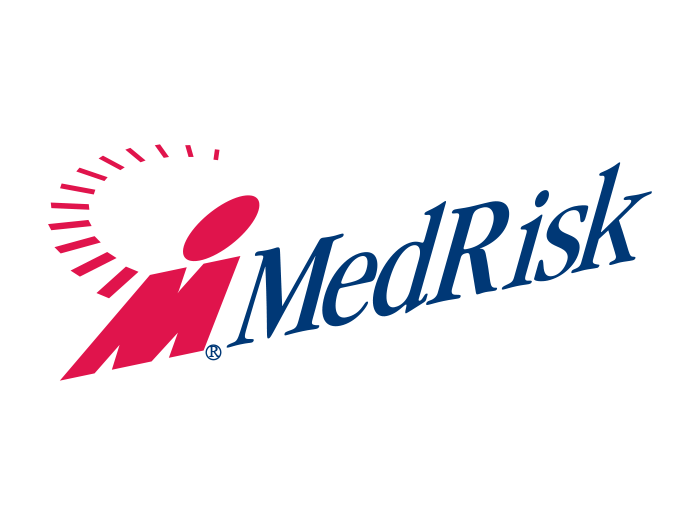Can Captives Take on Third Party Risk? You Bet Your Blockchain They Can

Captive insurance programs were originally designed to provide companies with coverage for hard to insure or prohibitively expensive lines of business.
To date though, captives have largely been limited to insuring the parent company and its affiliates.
Now, however, thanks to new advances in technology, including mobile applications and blockchain, captive owners have been able to extend their coverage to third parties, namely customers and vendors.
That has allowed them to minimize additional expenses and save time by streamlining or automating workflow processes. Among the main costs it can reduce are handling of policy information, proof of insurance certificates and claims submissions and payments.
At the same time, this technology has also enabled owners to expand their programs to cover a wider range of risks for third parties, thus adding new revenue streams. Other benefits include the ability to have better-informed underwriting and policy design because of greater access to real-time data and information flow and improved security, claims assessment, reporting and audit trails.
And with the number of captives writing third-party business increasing by 12% in 2018 as a direct result of technological advancements, according to a recent Marsh report, that figure will surely continue to rise in future years.
Blockchain’s Influence
The concept of blockchain, invented by Satoshi Nakamoto in 2008, is simple in theory: Based on distributed ledger technology (DLT), blockchain allows multiple parties on a network to have simultaneous access to the same data, which is updated in real time. As changes are made, new blocks are added to the chain.

Sarah Hazzledine, managing director of financial services technology advisory, Accenture
But as with most new technologies, there are a host of challenges involved; not least the initial expense, lack of skilled operators, integration with existing systems and scalability, with many test programs still in their infancy.
“Today, the learning curve for implementing these technologies is fairly steep,” said Rocco Mancini, vice president at Marsh Captive Solutions.
“In order to manage the learning curve, captive owners who are early adopters of these technologies are investing in proof of concept and pilot programs that allow them to identify risks in a controlled environment.”
So how are the early adopters adapting to this new technology and using it to grow and run their business more efficiently? And which new lines of business has it enabled them to expand into?
Increasing Uptake
Blockchain’s uptake by captives has increased seismically in recent years.
Last year, the State of Vermont rolled out a pilot program to test the use of blockchain technology by captives for digital recordkeeping:
- The State of Vermont has joined the blockchain revolution with the launch of a new pilot program focused on the technology’s use for digital recordkeeping within its captive industry.
- Following its secretary of state Jim Condos and the department of financial regulation commissioner Michael Pieciak signing a memorandum of understanding, the program is now being used by the State to identify areas where blockchain can be used to improve data security in the regulatory process and reduce costs for businesses and residents in Vermont.
- It also enables captives to register with the secretary of state using blockchain.
- “Developments in technology provide opportunities for government to improve efficiency and transparency, cut red tape and improve services for Vermonters,” said Condos. “This pilot will allow us to examine whether or not the application of blockchain technology for digital recordkeeping can improve aspects of the State regulatory process.”
Vermont’s captive insurance commissioner Dave Provost added: “Vermont has long been known as an international leader in the captive insurance industry, with a robust regulatory and professional community and a willingness to embrace innovation. This makes Vermont’s captive insurance industry the ideal place to pilot this blockchain program.”
Carriers have also got in on the act. Allianz Global Corporate & Speciality division has developed a blockchain prototype aimed at streamlining the process flows within captive programs, including annual renewals, premium payments, and claims submission and settlement.
Accenture and Generali Employee Benefits has even launched a blockchain-based reinsurance coverage for captives. By using blockchain to share the claims data with external insurers and reinsurers, it enables automatic reconciliation and reduces both time and processing errors.
Mancini said that captive owners and their service providers have now turned their attention to using the technology to handle third-party risks. This has allowed them to streamline the handling of policy information, provision of proof of insurance certificates, claims handling and reinsurance contracts — even if it’s too early to quantify by how much yet, he added.
“As commercial captive programs have expanded to and continue to expand to numerous risks, it has become difficult to quantify exactly how much overhead has been reduced by,” he said. “However, it is clear that the savings are significant enough to expand the risks that captive owners can write as part of their commercial captive program.”
“Captives have been used to understand, curate and teach the market how to underwrite emerging risks. An example of this is crime programs for cryptocurrency where the conventional market doesn’t have either enough information or a sense for the frequency and severity of the risk.” — Ward Ching, managing director, Aon Captive & Insurance Management
By providing a single source of truth, blockchain enables captive owners to make their business processes even more effective, according to Sarah Hazzledine, managing director of Accenture’s financial services technology advisory.
That includes easier data reconciliation, greater accuracy, transparency and efficiency gains, she said.
“Improvements in speed and accuracy can also create more positive customer experiences, vastly improving claims with access to better and faster data,” said Hazzledine. “Reducing costs in the claims process could, ultimately, even lead to lower premiums.”
Initial Hurdles
One of the biggest challenges, however, is in the implementation stage, according to Matthew Queen, general counsel, CCO, Venture Captive Management.
Therefore, captive owners and managers should work together to develop their own best practices by formulating standards and protocol for incident reporting, data collection and claims management, he said.
Companies also require a heavy upfront investment in the new system and qualified staff to operate it, Queen said. But, he added, once the technology becomes more widely available, these initial hurdles will be easier to overcome.

Rocco Mancini, vice president, Marsh Captive Solutions
“Setting up blockchain systems and hiring programmers qualified in the field is expensive and the talent is rare,” said Queen. “But like all technology, these barriers will fall as the technology spreads across the industry.”
Added to that are required wholesale changes to working practices and processes, said Hazzledine. To implement these, she said captive owners need to set realistic targets and objectives.
“DLT is a solution that takes time and must be met with realistic expectations,” Hazzledine said. “Implementing blockchain to grow the insurance business comes with the challenge of reshaping core industry processes, which comes with a new working culture, and not just looking at technology as a silver bullet.”
Mobile applications, like blockchain, also come with their own unique set of challenges, said Mike Woytowicz, director of business development, international at Artex Risk Solutions.
One of the main risks, he added, was cyber.
“As with any emerging technology, captives manage the learning curve through pilot programs prior to a full rollout, starting with one line of business and expanding into others as the technology is tested and proved/improved,” said Woytowicz.
“Cyber risk is always a concern in the current business climate, but with mobile apps, you could make the argument that they are perhaps more secure than a website as most mobile phones require a fingerprint or infrared face scan to unlock the device, make purchases, sign into apps, etc.”
Emerging Risks
According to the Marsh report, which examined trends among 1,100 captives it manages, the biggest spike in third party business was in contractor, vendor and customer risk coverage, up 138% over five years, and accounting for $162 million in net premiums in 2018.
Participants also wrote more than $3 billion in net premiums for extended warranty coverage in 2018, increasing by 22% over five years.
One of the largest areas of emerging risk for captives using blockchain, however, is in the sharing economy, according to Marcus Schmalbach, CEO of Ryskex. A prime candidate for this, he said, is ride-hailing firms such as Uber.
“Ultimately, all risks that allow parametric claims processing are predestined for blockchain and captive solutions,” said Schmalbach. “The gig economy, particularly the likes of Uber with its multiple third-party risks, by its very nature, subscribes to a digital business model, so this is just the next logical step.”
Schmalbach added that pilots carried out by his company had found cost savings of up to 45% could be achieved by adopting these technologies. That, in turn, gives captive owners greater scope and capacity to take on new risks such as reputation, intellectual property and climate change, he said.
Despite already making big strides, Eric Boyum, national practice leader, Aon’s technology and communications practice, said the take-up of mobile applications and blockchain in captives was still in its relative infancy.
Rather, he said, captives are being used to provide coverage for these emerging technology risks.
Ward Ching, managing director, Aon Captive & Insurance Management, added: “Captives have been used to understand, curate and teach the market how to underwrite emerging risks. An example of this is crime programs for cryptocurrency where the conventional market doesn’t have either enough information or a sense for the frequency and severity of the risk.” &











